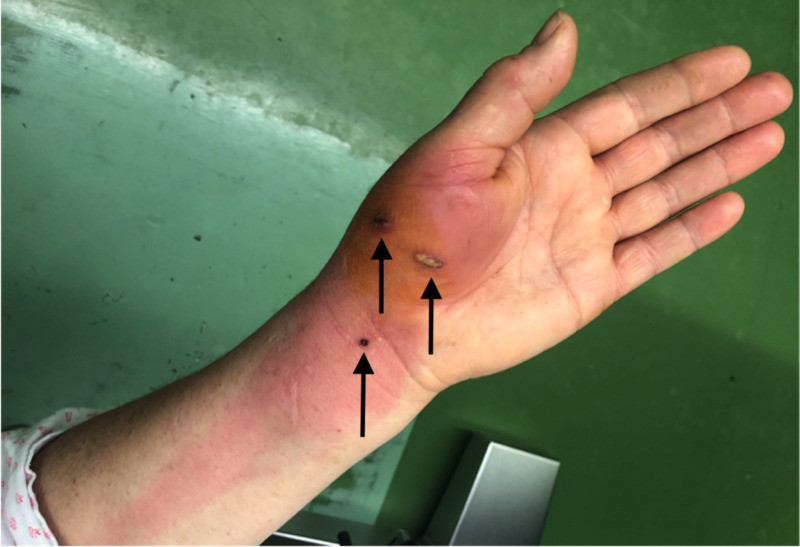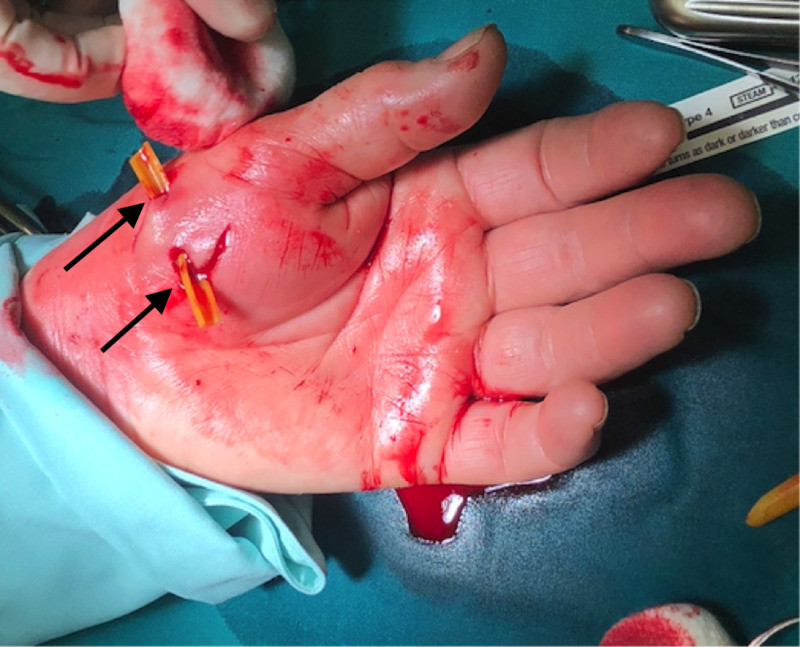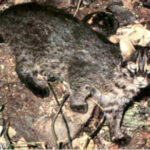Cat bites, often underestimated due to their seemingly minor appearance, are a significant cause of infection following animal encounters. While dog bites are more frequent, cat bites are actually responsible for the majority of bite-related infections. This is largely because cats possess sharp, needle-like teeth that can penetrate deeply into tissues, delivering bacteria directly into puncture wounds. Understanding the risks and recognizing the signs of a “Cat Bite Infected” is crucial for prompt and effective treatment. This article delves into why cat bites are prone to infection, what symptoms to watch for, and how to manage and prevent complications.
Why Cat Bites Get Infected Easily
The anatomy of a cat’s teeth plays a critical role in the high infection rate associated with their bites. Unlike the crushing bite of a dog, a cat bite is typically a puncture wound. Their slender, sharp teeth can pierce through skin and deposit bacteria from their saliva deep into tissues, joints, and even bones. This creates an ideal environment for infection to develop. The puncture wounds often close quickly, trapping bacteria beneath the skin and hindering natural cleaning and drainage processes. Cat saliva harbors a variety of bacteria, most notably Pasteurella multocida, which is a common culprit in cat bite infections. Other bacteria, including Streptococci, Staphylococci, and Bartonella henselae, also contribute to the risk of a “cat bite infected”.
Symptoms of an Infected Cat Bite
Recognizing the signs of an infected cat bite early is vital to prevent serious complications. Symptoms of a “cat bite infected” typically appear within 24 to 48 hours after the bite occurs. Key indicators include:
- Increasing Pain: Beyond the initial bite pain, an infected wound will become increasingly painful and tender to the touch.
- Redness and Swelling: The skin around the bite will become red, inflamed, and swollen. This redness may spread outwards from the bite site.
- Warmth: The area around the bite may feel warm to the touch compared to the surrounding skin.
- Pus or Drainage: Discharge of pus or fluid from the wound is a clear sign of infection. The discharge may be cloudy, yellowish, or greenish.
- Fever and Malaise: In more severe cases, systemic symptoms like fever, chills, fatigue, and general feeling of illness (malaise) can develop.
- Lymphangitis: Red streaks extending from the bite wound up the arm or leg indicate that the infection is spreading to the lymphatic system. This condition, known as lymphangitis, requires prompt medical attention.
 Hand with infected cat bite wounds showing redness, swelling, and lymphangitis
Hand with infected cat bite wounds showing redness, swelling, and lymphangitis
Risk Factors for Severe Cat Bite Infections
While any cat bite can become infected, certain factors increase the risk of developing a more severe “cat bite infected” scenario. These risk factors include:
- Older Age: Older adults tend to have weaker immune systems and may be more susceptible to severe infections.
- Compromised Immune System: Individuals with conditions like diabetes, HIV/AIDS, or those undergoing immunosuppressive therapy are at higher risk.
- Delayed Medical Care: Seeking medical attention late after a cat bite allows more time for infection to establish and spread.
- Location of the Bite: Bites to the hands, wrists, and joints are particularly vulnerable to infection due to the complex anatomy and limited blood flow in these areas.
- Smoking: Smoking can impair blood circulation and wound healing, increasing the risk of complications from a “cat bite infected”.
Diagnosis and Treatment of Infected Cat Bites
If you suspect your cat bite is infected, seeking medical attention is crucial. A healthcare professional will evaluate the wound, assess the extent of infection, and determine the appropriate treatment. Diagnosis typically involves a physical examination of the wound and surrounding tissues. In some cases, blood tests may be ordered to check for elevated white blood cell counts or inflammatory markers, indicating systemic infection.
Treatment for a “cat bite infected” usually involves:
- Wound Cleaning and Debridement: The wound will be thoroughly cleaned and irrigated to remove bacteria and debris. Debridement, the removal of dead or damaged tissue, may be necessary to promote healing and prevent further infection.
- Antibiotics: Antibiotics are the cornerstone of treatment for infected cat bites. Amoxicillin-clavulanate is frequently the first-line antibiotic prescribed to combat common bacteria like Pasteurella. For individuals with penicillin allergies, alternative antibiotics like doxycycline or fluoroquinolones may be used.
- Tetanus Immunization: Your doctor may recommend a tetanus booster if your tetanus immunization is not up-to-date.
- Surgical Intervention: In severe cases of “cat bite infected”, particularly those involving deep tissue infections, abscesses, or spread to the lymphatic system, surgical drainage and debridement may be required. Hospitalization may be necessary for intravenous antibiotics and close monitoring.
 Surgical debridement and irrigation of infected cat bite wounds
Surgical debridement and irrigation of infected cat bite wounds
Cat Scratch Disease and Infected Bites
Bartonella henselae, the bacteria responsible for cat scratch disease, is another potential concern following a cat bite, especially if the bite becomes infected. While cat scratch disease is more commonly associated with scratches, bites can also transmit the bacteria. Symptoms of cat scratch disease can include swollen lymph nodes, fever, fatigue, and headache, in addition to local wound infection. If cat scratch disease is suspected, specific blood tests can confirm the diagnosis.
Prevention of Cat Bite Infections
Preventing cat bites is the best way to avoid the risk of infection. Here are some tips to minimize your risk:
- Avoid Provoking Cats: Be mindful of a cat’s body language. Avoid actions that might be perceived as threatening, such as pulling tails, disturbing them while eating or sleeping, or making sudden loud noises.
- Handle Cats Gently: Approach and handle cats calmly and gently. Supervise children closely when they are interacting with cats.
- Wash Bites Immediately: If you are bitten by a cat, wash the wound thoroughly with soap and water for several minutes.
- Seek Medical Attention: Consult a doctor, especially for deep puncture wounds, bites that bleed profusely, or bites showing signs of infection.
Conclusion
A “cat bite infected” is a common and potentially serious medical issue due to the nature of cat teeth and the bacteria present in their saliva. Prompt recognition of infection symptoms and timely medical intervention are critical to prevent complications and ensure proper healing. If you experience a cat bite, especially if it’s deep or shows signs of infection, don’t hesitate to seek medical advice to safeguard your health and well-being.
References
[1] (Reference from original article)
[2] (Reference from original article)
[3] (Reference from original article)
[4] (Reference from original article)
[5] (Reference from original article)
[6] (Reference from original article)
[7] (Reference from original article)
[8] (Reference from original article)
[9] (Reference from original article)
[10] (Reference from original article)
[11] (Reference from original article)
[12] (Reference from original article)

